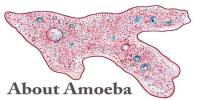The phrase “gain of function” is frequently used to describe virus research that may endanger the public health in exchange for dubious benefits. Even though some research on newly discovered viruses can produce versions that can infect humans, this does not necessarily imply that the research is risky or unproductive.
Since 2020, concerns have centered on laboratory research on the viruses that cause COVID-19 and the bird flu, respectively. The National Institutes of Health previously put gain-of-function research on specific viruses on hold for three years, and gain-of-function research on “potentially pandemic pathogens” has been recommended as a ban by various U.S. legislatures.
It is important to consider seriously the prospect that a genetically altered virus could elude containment. Gain-of-function experiments, however, are neither necessarily dangerous or the domain of lunatics.
Gain-of-function methods are actually a fundamental tool in biology that are used to investigate much more than simply viruses. They have helped to make many, if not most, of the field’s most recent discoveries, such as penicillin, cancer immunotherapies, and drought-resistant plants.
As virus researchers, we believe that misinterpreting “gain of function” as a negative phenomenon hinders the development of technology, ecological sustainability, and human health. Clarifying what gain-of-function research really is can help clarify why it is an essential scientific tool.
What is gain of function?
Scientists can alter a particular component of a living creature and then examine the results to discover how that component functions. These modifications occasionally cause the organism to acquire a new function or lose an existing one.
For instance, researchers can take a sample of a person’s immune cells and change them to express a protein that specifically targets cancer cells if the objective is to increase the ability of immune cells to kill tumors. This mutated immune cell, called a CAR-T cell thereby “gains the function” of being able to bind to cancerous cells and kill them.
Based on the exploratory study of scientists that created such “Frankenstein” proteins in the 1980s, similar immunotherapies that aid the immune system in attacking cancer cells have advanced. At that time, there was no way to know how useful these chimeric proteins would be to cancer treatment today, some 40 years later.
Similar to this, scientists have created plants that can grow and flourish in places they previously could not by introducing specific genes into rice, corn, or wheat plants that improve their production in various climates. This is a critical advance to maintain food supplies in the face of climate change.
Well-known examples of food sources that have their origins in gain-of-function research include rice plants that can grow in high flood plains or in drought conditions or that contain vitamin A to reduce malnutrition.
Medical advances from gain-of-function research
Gain-of-function experiments are ingrained in the scientific process. The advantages of gain-of-function tests are frequently not immediately apparent. It takes years for research to result in a new technology or treatment that can be used in clinical settings.
The majority of antibiotics were created using gain-of-function research that involved the manipulation of bacteria or mold. Alexander Fleming’s initial discovery that the mold Penicillium rubens could produce a compound toxic to bacteria was a profound medical advance.
However, it wasn’t until researchers played about with mold strains and growth conditions that therapeutic use of penicillin was made possible. It was only possible for the mold to develop the ability of increased penicillin production with the use of a certain growing medium, which was necessary for its mass manufacture and broad usage as a medication.
Research on antibiotic resistance also relies heavily on gain-of-function approaches. To create new medications that microorganisms can’t easily avoid, researchers must understand how bacteria build drug resistance.
The development of science and medicine has also depended heavily on gain-of-function studies in virology. In the lab, oncolytic viruses are genetically altered to attack and eradicate malignant cells like melanoma.
Similarly, the Johnson & Johnson COVID-19 vaccine contains an adenovirus altered to produce the spike protein that helps the COVID-19 virus infect cells. By modifying live flu vaccinations to grow at low temperatures and losing the ability to grow at human lung temperatures, scientists were able to create live attenuated vaccines.
Scientists were able to create new tools to treat and prevent disease by giving viruses new activities.
Nature’s gain-of-function experiments
Because these mechanisms already occur in nature, gain-of-function techniques are necessary to further our understanding of viruses.
Numerous viruses that affect nonhuman animals like bats, pigs, birds, and mice can spread to humans. A virus produces errors each time it copies its DNA. Although the majority of these alterations are harmful and decrease a virus’s capacity for replication, some may enable a virus to replicate more quickly or effectively in human cells. Natural selection causes viruses with these uncommon, advantageous mutations to spread more widely than other types and eventually take over the viral population.
If these viruses can replicate even a little bit within people, they have the potential to adapt and thereby thrive in their new human hosts. That is nature’s gain-of-function experiment, and it is happening constantly.
By identifying the exact characteristics that enable viruses to spread among individuals and infect them, gain-of-function experiments in the lab can help scientists foresee the changes viruses may go through in nature.
In contrast to natural trials, they are carried out under extremely controlled laboratory circumstances, including air flow control, personal protective equipment, and waste sterilization, meant to reduce the danger of infection to laboratory staff and others.
To reduce the potential risk of spreading an infection to the general public, it is crucial that researchers strictly adhere to lab safety. It is equally crucial for virologists to keep using the instruments of contemporary science to estimate the risk of naturally occurring viral spillovers before they develop into outbreaks.
A bird flu outbreak is currently raging across multiple continents. While the H5N1 virus is primarily infecting birds, some people have gotten sick too. More spillover incidents could alter the virus in ways that would make it more effective at spreading among people, possibly causing a pandemic.
Gain-of-function tests published a decade ago have improved scientists’ understanding of the real risk of bird flu spread. These laboratory tests demonstrated that ferrets within a few feet of one another may spread avian flu viruses through the air. They also revealed multiple features of the evolutionary path the H5N1 virus would need to take before it becomes transmissible in mammals, informing what signatures researchers need to look out for during surveillance of the current outbreak.
Oversight on gain of function
Perhaps this sounds like a semantic argument, and in many respects it is. Gain of function is a valuable tool for studying biology that shouldn’t be regulated, but many scientists would also argue that it should be restricted for research on particular harmful infections. The issue with this reasoning is that gain-of-function strategies are necessary for pathogen research to be successful, just like in any other area of biology.
Gain-of-function studies on possible pandemic pathogens are already subject to oversight. The risks associated with virus research are reduced by multiple levels of safety controls at the institutional and governmental levels.
Updates to the current regulatory framework are reasonable, but we don’t think outright bans or new restrictions on gain-of-function research will make society any safer. Instead, they might impede development in fields like agriculture and cancer treatments. Gain-of-function techniques raise a number of specific research topics, thus identifying which ones are of concern can assist determine how to improve the current supervision system.
















